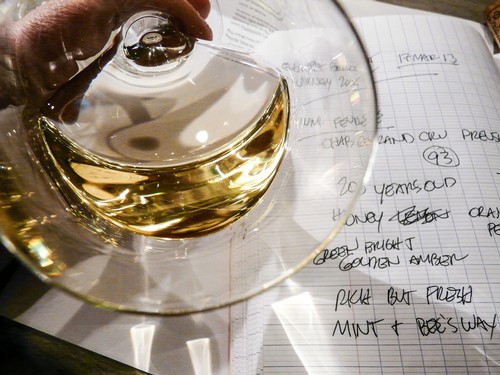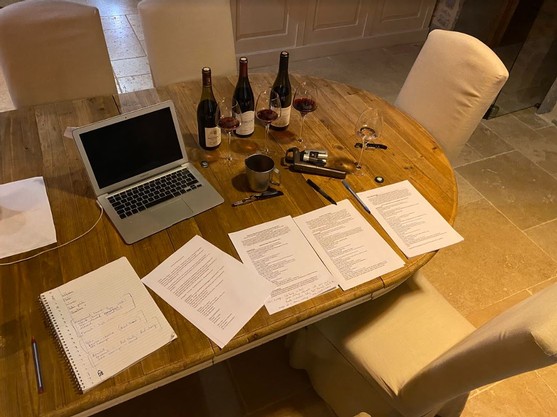Tasting & Evaluating Burgundy Wine
Great wine is about balance. The ability to confidently evaluate a wine can at first feel a little daunting, but it is really quite simple, let us explain:
Before we taste wine we smell it, evaluating the aromatic compounds and their intensity. Smells are dealt with by the olfactory bulb in the front of the brain and can link to your memory and your history of smells. We need to explore the aromas to truly discern the differences and nuances in wine. This prepares us for the taste in the mouth or as the French say "mise en bouche" (get your mouth ready to taste).
On the palate we are able to truly assess the sweetness, acidity, alcohol, tannin, body, flavour compounds, flavour intensity and finish, which ultimately leads us to our conclusion.
We sip a small amount of wine and roll it around our mouths. While doing this we draw in a small amount of air over the wine cupped on our tongue. We sort of make a duck face. Then we gently rub our tongue against the roof of our mouth.
In Burgundy, this action is sometimes called grumage and it oxygenates the wine in the mouth which helps release both aromas and tastes. The aromas rise up to the nose and from the back of the palate.
Taste buds on your tongue enable you to detect flavors of sweet, sour, bitter and more. Honey and vanilla can be detected on the tip of your tongue in white wines. Acidic flavors can be detected on the sides and provide tension and crispness typically found in Chablis. Burgundy is renowned for its fantastic acidity. In red wines tannins can provide these additional sensations on your gums and cheeks. which can be described in terms of spiky, unripe, soft, round or even mature. Alcohol plays a role and can add warmth to the taste and fullness of the wine profile. But you don't want to taste the alcohol and so burgundy wine, with generally lower alcohol content, tends to provide a wonderful balance in the wine. The correct service temperature also helps the alcohol remain in balance.

Once you detect a flavour, for example 'Apple', ask yourself what type of apple... is it green apple, sweet apple, apple pie, or apple custard? Challenge your mind to expand the descriptors and you will be surprised how many flavors will emerge. Remember we already said that the brain can link your memory and history of smells, and perhaps not-surprisingly, it is the same for taste!
The first impression of a wine is often called the attack. It gives a glimpse into the qualities of a wine and its aromatic palette from which you will put the wine in a broad category such as Earthy-wood, Structured, Floral, or even lively or lifeless. Next is what is known as the 'mid-palate' within which, the flavors develop. The finish is something that a lot of wine lovers do not assess properly, but it is very important. Do the flavors linger, are they intense, simple or complex?
Burgundy is renowned for the balance in its wines, at the heart of which is its acidity, the secret to all great food wines! We hope this information and our Palate Advisor help you understand how to taste, evaluate and select Burgundy wine a little better. The important thing to remember is to have fun and not take it too seriously. But, at the same time, it is important to pay attention to what the wine is delivering so that it enhances your enjoyment and love of wine, and especially for hidden gem Burgundys on burgundywine.com!
